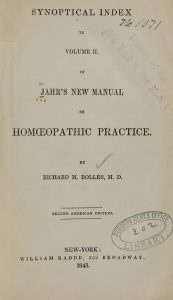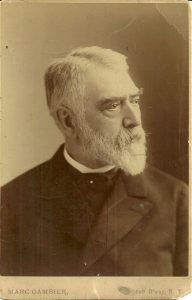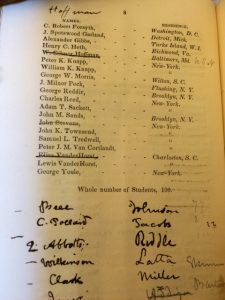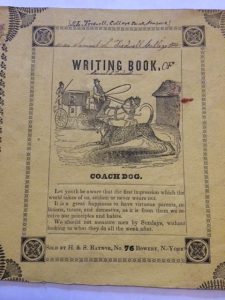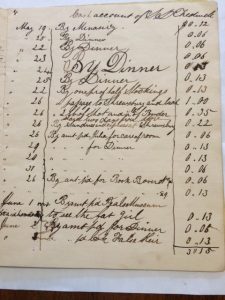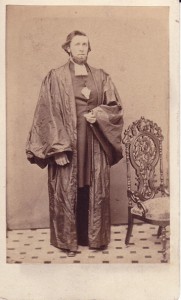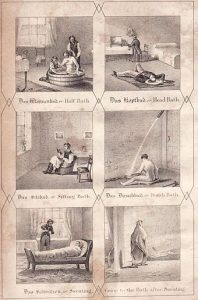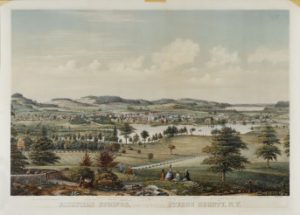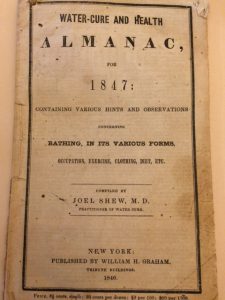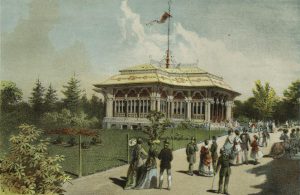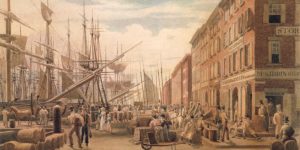The New Woman
by Merchant's House Museum
Our thanks to guest blogger Esther Crain.
Esther Crain, a native New Yorker, is the author of 2016’s The Gilded Age in New York, 1870-1910 (Hachette) and the New-York Historical Society’s New York City in 3D in the Gilded Age (Black Dog & Leventhal) published in 2014. She is the founder and editor behind Ephemeral New York, a website that chronicles the city’s past, which was been featured in numerous publications, including the New York Times, New York Daily News, and New York Post.
Introducing the New Woman
They began appearing in the 1890s: young women, their hair pinned back or piled in loose waves under elaborate hats, striding confidently down Broadway and Fifth Avenue. Dispensing with the petticoats and heavy corsets that weighed their mothers down a generation earlier, these middle- and upper-class women dressed in crisp, high-collared shirtwaists and long tailored skirts—garments which scandalously rose several inches off the ground when they pedaled a bicycle on Riverside Drive or strolled along gusty 23rd Street.
This army of “new women,” as they were called, embraced the progressive thinking of the later Gilded Age. Not content to be confined to the sphere of the home, they took part in the social world of theaters and restaurants. Some attended new women’s colleges like Hunter and Barnard. Many pursued something of a career: in settlement houses, as typists, or in the arts. Perhaps they lived independently. “Bachelor girl” apartments were the latest fad reported by the press, which was endlessly fascinated by the New Woman’s comings and goings.
| . |
A City Captivated
“There had been much said in the newspapers concerning the New Woman and what kind of creature she was,” stated the Brooklyn Daily Eagle in March 1895. “The pictorial papers had ridiculed her, showing her standing at bars drinking on street corners smoking cigars. This ridicule, however, would not prevent the coming of the New Woman. She would occupy any and every place, which an intelligent human being could fill: the bar, the pulpit, the legislative hall, and will be found in every trade and profession.”
Older generations were shocked by her self-reliance and sense of purpose in the wider city. Her male counterparts took her autonomy in stride and enjoyed her propensity to play tennis and ride a bike. Cultural critics worried about her morals. Pioneering women’s rights activists largely cheered her on. “The finest achievement of the new woman has been personal liberty,” wrote writer and champion of women’s freedom Winnifred Harper Cooley in 1904.
.
What Did Gertrude Tredwell Think?
The New Woman must have been an alien creature to Gertrude Tredwell. Born in 1840, Gertrude was a product of a much smaller New York that barely extended past Union Square. At the time of her birth, the city’s population hovered at approximately 300,000; by 1860, about half a million more people inhabited New York, including immigrants largely from Ireland and Germany whose lives were vastly different than that of the Tredwell family.
In the pre-Civil War city, men of means like Gertrude’s merchant father, Seabury Tredwell, occupied the outside worlds of business and politics and could freely enjoy restaurants, saloons, and sports. Women like herself, her mother, and her sisters were supposed to be “the angel of the home,” raising children, managing her household, and influencing the moral development of her family.
Like the typical New Woman, Gertrude was born into comfortable financial circumstances. But the comparison ends there. The New Woman was determined to develop independence and live freely, her movement and safety enhanced by electric streetlights and the new whirring cable cars. Gertrude, on the other hand, didn’t leave the Tredwell home. She came into the world at 29 East Fourth Street, grew up in an enclave of wealth and refinement, and died in the same house, amid a much shabbier neighborhood, 93 years later.
The Fight for Equal Rights
Within the span of Gertrude Tredwell’s life, the equal rights era that led to the New Woman was ushered in. After the Civil War, Elizabeth Cady Stanton and Susan B. Anthony relaunched their fight for women’s rights, including the right to the vote. Working from an office on Newspaper Row, Stanton and Anthony published their weekly paper, Revolution. (“Men their rights, and nothing more; women their rights, and nothing less” was the motto.) They spoke out at lecture halls like Cooper Union at Cooper Square and Steinway Hall, on East 14th Street, both not far from the Tredwell home.
.
As the Gilded Age continued, individual women made strides. Dr. Elizabeth Blackwell, the nation’s first female doctor, opened a medical school for women. Despite the fact that she was legally barred from voting, Victoria Woodhull announced her quest to be the first woman president and ran on the new Equal Rights party ticket. Josephine Shaw Lowell founded the city’s Charity Organization Society. Nelly Bly and Alice Austen pioneered a type of journalism that called for social changes. Lillian Wald and Mary Kingsbury Simkhovitch founded settlement houses and sparked a wider movement to boost opportunities for women and children.
.
The Working Girl Makes Her Entrance
Rising at the same time as the Equal Rights movement and this new professional class of women was another Gilded Age female archetype: the working girl. With men off on the battlefields during the Civil War, women took their place. These young, often immigrant women toiled in factories, clerked in offices, cooked and cleaned in private homes, and acted as shop girls in the dry goods emporiums of Ladies Mile. After the end of the war, they continued to work. In 1869, one-fourth of all women in New York did paid labor, according to the New York Herald.
Upper class women tended to be indifferent to them. (“While yet your breakfast is progressing, and your toilet is unmade, comes forth through Chatham Street and the Bowery, a long procession of them by twos and threes to their daily labor,” wrote Fannie Fern in an 1868 essay aimed at the middle class.) Even so, the mass of working women changed the look of the city, joining men in streetcars on the way to work in the morning and back to their family home or boardinghouse when the day was done. They were the subject of plays and popular songs. No labor laws mandated that women and men in the same job get equal paychecks, so they were paid less. Harassment on the job was a problem, as was unscrupulous male bosses who wouldn’t pay up. To help, the Working Women’s Protective Union formed in 1863. Located on Bleecker Street, it was a few blocks—but worlds away—from the Tredwell home.
The Suffragist Hits the Streets
| . |
As women’s presence and power increased in New York, many coalesced behind one main goal: the right to vote. In the 1900s and 1910s, suffrage supporters rallied in Union Square and held many parades on Fifth Avenue that were catnip to the media, always obsessed with the New Woman and her sisters in arms. In 1912, about 10,000 parade marchers demanded the vote. In 1915, the number of marchers swelled to 40,000. In 1917, New York voters gave women the right to cast their ballots—three years before the 19th amendment was ratified.
Did Gertrude register to vote along with more than 414,760 women from New York State following the 1917 decision? No. But it’s hardly surprising. She would have been 77 years old by then, a member of the 19th century wealthy merchant class now living in the progressive 20th century, when the city’s population was closing in on 5 million. Her last surviving sister died in 1909, leaving Gertrude impoverished and alone.
Surely she was aware of the enormous changes in the status of women in her lifetime. She must have read newspaper accounts of Stanton and Anthony; certainly she came across the New Woman, striding along Broadway or socializing with friends. Gertrude likely watched shop girls head to factories and store counters from her window on East Fourth Street, now a rougher-edged neighborhood that was less residential and bent toward light manufacturing. What did she think of them and the new world women inhabited? If only the Merchant’s House walls could talk.
Tredwell family research contributed by William Herrlich.
“A Meritorious Establishment:” Tredwell Philanthropy, Part 3
by Ann Haddad
An Elite Education for the Tredwell Children
Like other affluent New Yorkers, Seabury and Eliza Tredwell chose to send their children to private day and boarding schools. Although little is known about their elder son Horace’s education, we do know that Samuel Lenox was sent to the prestigious St. Paul’s College in College Point, New York (see my blog post of September 2016). The six Tredwell daughters attended private neighborhood schools, including Mrs. Okill’s Academy on nearby Clinton Street (now 8th Street), and Miss Gibson’s School on Union Square.
The Calamity of Ignorance
Most New York City children who were fortunate enough to receive an education, however, did so at one of the many church-based charity schools, or by the nondenominational New York Free School Society (FSS), which was founded in 1805 to provide a free education to the city’s poor children whose families were not connected with any religious organization. DeWitt Clinton, then Mayor of New York City, who spearheaded the Free School Movement, said of the importance of educating the poor:
“The necessity was so pressing, the calamity of ignorance so appalling, that the problem of removing the crying shame could not be set aside or postponed.”
By 1825, aided by public funding, the FSS had educated nearly 20,000 children.
Falling Through the Cracks
Despite these successful efforts by the churches and by private philanthropy to provide children with free education, roughly 43,000 other youth, largely from indigent households, fell through the cracks. Neglected and living in poverty, they did not attend school; instead, these “loafers” and “ragamuffins” roamed the streets, often taking up lives of petty theft and vagrancy. If arrested and imprisoned, even for minor infractions, these young offenders were indiscriminately incarcerated with adults in overcrowded and rundown prisons; this disastrous combination resulted in many juveniles returning to society as hardened criminals. The conditions of the City Prison, commonly known as Bridewell, was described as follows:
“In rooms about 18 feet square, there are often thirty or forty persons, confined together, without any discrimination except that of sex and color – boys of nine years of age and upwards, sharing the same dismal fare, and mingling in conversation with aged villainy, – and girls of ten or twelve exposed to the company and example of of the most abandoned of the sex.”
The House of Refuge
In 1824, a group of wealthy and philanthropic New Yorkers, including Cadwallader D. Colden (1769-1834), a former Mayor of New York City, recognized the need to establish a facility where young petty offenders could be segregated from adults criminals, to avoid “the contamination of youth by vicious associations.” On January 1, 1825, after raising $20,000 through private donations, the House of Refuge for Juvenile Delinquents opened its doors on Broadway (then Bloomingdale Road) and 23rd Street, in a former Federal arsenal. The first institution of its kind in America, the House of Refuge sought to rescue poor and destitute children from lives of delinquency. The outgrowth of the Society for the Prevention of Pauperism, the House of Refuge was privately managed, but supported in part by New York State and City funds.
Under the supervision of Joseph Curtis, the institution opened with an enrollment of three boys and six girls. By 1832, it had outgrown its accommodations and moved to 23rd Street and the East River. It’s next and final move occurred in 1854, when it relocated to a facility on Randall’s Island that could accommodate 1,200 children.
Habits of Industry
The institution accepted children under the age of 16, referred by the judicial system or their own families, who were rehabilitated through a strict daily program of school, work, and prayer. Their education, managed by five teachers, included instruction in reading, writing, arithmetic, and geography, with occasional music lessons. Religious instruction on the Sabbath was provided by the Chaplain and the Head Teacher. Undoubtedly many of the students had received little or no prior religious instruction, for one teacher of boys, T.C. McKennee, wrote in 1845:
“I had not expected to find, in the nineteenth century, and in the city of New-York, so many children so entirely ignorant of the fundamental doctrines of the christian religion.”
By all accounts, the food at the House of Refuge was nourishing and adequate. The children were fed meat once daily. In 1860, one New York Times reporter commented,
“We are inclined to believe that the food, both in quality and quantity, is better than that of the laboring classes generally.”
All children admitted to the House of Refuge were “trained in habits of industry.” Boys were instructed in such useful trades as shoemaking, tailoring, and chair caning. Girls learned cooking, sewing, and clothing and bedding manufacturing. Any child who rebelled against the strict rules of the institution (and records indicate there were a good number), or tried to escape was subjected to corporeal punishment: whipping; placement in solitary confinement; and the use of leg irons were commonly employed. Black children were not accepted at the institution until 1833.
Charles Dickens Approves
Visitors to the House of Refuge, including Charles Dickens and Frances Trollope, were greatly impressed with the work of the institution. Dickens, in his American Notes (1842), called it a “noble charity,” and a “meritorious and admirable establishment,” which is “always under the vigilant examination of a body of gentlemen of great intelligence and experience.” Deemed a great success, the institution admitted over 1,678 boys and girls between 1825 and 1835. In 1860 alone, 560 children were in attendance.
.
.
Out into the World
Once deemed “reformed,” a resident was then either apprenticed to a trade or returned to his parents (the latter group being those who were most frequently returned for another round of reform). When discharged to their apprenticeships, residents were given a letter that included the following words of advice:
“If you make yourself master of your business, are diligent in your calling, establish a character for truth, honesty, industry and sobriety, you cannot fail to obtain a comfortable living, and to be beloved and respected.”
The House of Refuge boasted in their Annual Reports that within 3 to 5 years after discharge, 75 percent of those “reformed” were practicing a trade.
Seabury Supports the House of Refuge
With his donation of $25 in 1824, Seabury Tredwell became one of the inaugural donors to the House of Refuge. For the following three years he, along with his brothers Adam and George, donated $20; thereafter his donation amounted to $5 annually, earning him inclusion on the list of “Life Subscribers and Donors.”
The House of Refuge closed in 1935. As a pioneer in the concept of juvenile reformatories, it made a lasting impact on the juvenile justice system, and in its early years served as a model for the establishment of reformatories in many other American cities.
On February 21, 1852, Miss Susan N., a former resident of the House of Refuge then apprenticed as a domestic servant, wrote the following to her former matron at the House:
“Mr. and Mrs. S use me as their own daughter, and I feel happy. Tell the girls I hope they will listen to all the good advice I know they receive from day to day. As my time is out in about 8 months, I expect to spend Thanksgiving with you in the Refuge, if nothing happens.”
No doubt Miss Susan N. hoped that at the end of her apprenticeship, she would be asked to remain permanently at the home of her employers. I wonder what her options would be if they did not. We have no way of knowing how things turned out for this young girl, but we may imagine that Susan rang in the New Year of 1853 with some measure of happiness in the fact that she had found a situation with a good family who treated her with respect, support, and perhaps even love. May 2017 bring us all as much!
Sources:
- Burrows, Edwin G. and Mike Wallace. Gotham: A History of New York City to 1898. New York: Oxford University Press, 1999.
- Dickens, Charles. American Notes. New York: John W. Lovell Company, 1842. www.archive.org. Accessed 01/05/17.
- Hart, Nathaniel C. Documents Relative to the House of Refuge. New York: Mahlon Day, 1832. https://archives.org/details/documentsrelativ00soci_0. Accessed 11/14/16.
- Knapp, Mary. An Old Merchant’s House: Life at Home in New York City, 1835-65. New York: Girandole Books, 2012.
- “Our City Charities: the New-York House of Refuge for Juvenile Delinquents.” The New York Times Archive. January 23, 1860. www.nytimes.com. Accessed 11/14/16.
- Palmer, A. Emerson. The New York Public School. New York: Macmillan Company, 1905. www.archive.org. Accessed 1/3/17.
- Pierce, B.K. A Half Century with Juvenile Delinquents; The New York House of Refuge and Its Times. New York: D. Appleton and Co., 1869. www.archive.org. Accessed 11/14/16.
- Society for the Reformation of Juvenile Delinquents, N.Y.C. Account Book 1841-1846. New York Historical Society Manuscript Collection.
“The Quality of Mercy:” Tredwell Philanthropy, Part 2
by Ann Haddad
The Tredwells’ Good Genes
Between 1821 and 1840, Seabury Tredwell’s wife, Eliza, gave birth to eight children. Considering the primitive medical care available in the antebellum period, and the resulting high rate of infant and childhood mortality, it is remarkable all of the Tredwell children lived to adulthood. Gratitude for their good fortune in light of the risks associated with childbirth may have been the impetus behind the Tredwells’ decision to support the New York Asylum for Lying-In Women (NYALIW).
Poor, Widowed, Abandoned Women
By the turn of the 19th century, many women found themselves struggling alone to support themselves and their children. Two major yellow fever epidemics, in 1795 and 1798, left many of them widowed. The influx of immigrants to New York City led to a population boom, but jobs were scarce for this group.
| . |
Husbands frequently needed to travel far from the city in search of employment. Some never returned. The incidence of alcoholism among the poor increased. As a result, many pregnant women lacked traditional family support, especially when assistance was needed as the time of their confinement approached.
It is ironic that, although America began to take on a sentimental attitude toward motherhood in the late 18th century, moralistic and religious convictions found many pregnant women, especially unwed ones, with no other recourse for medical care except the almshouse at Bellevue Hospital. “Respectable” women sought to avoid this institution, however, as it had a reputation for being a haven for prostitutes and other “degraded” women.
Wealthy Women to the Rescue
In the early 1820s, wealthy women began to focus their reform efforts on women’s causes, such as education and improved health care. In 1823, a group of benevolent women led by Mrs. Arthur Tappan, wife of the abolitionist Arthur Tappan, established the New York Asylum for Lying-In Women. Its aim was to provide temporary accommodations and skilled medical assistance to poor but “reputable” women during their confinement. “Reputable” in this case meant married; in fact, all applicants were screened by a committee, and were required to furnish a marriage certificate and character references to be considered for admission.
Once admitted, a woman was supplied with a bible and a list of rules, which stipulated that she could not leave the building, could not receive visitors, and could not remain longer than four weeks after delivery. Alcohol was forbidden; that which was used for medicinal purposes was kept in a locked cabinet. Emphasis was placed on order, morals, and obedience. To emphasize their noble mission, the board of the NYALIW included the following passage from William Shakespeare’s The Merchant of Venice in their first Annual Report:
“The quality of mercy is not strain’d.
It droppeth as the gentle rain from Heaven
Upon the place beneath: It is twice blest;
It blesseth him that gives and him that takes.”
By Women, for Women
Although it employed a resident male physician, the NYALIW was unique in that it was managed and run by women: it had an all-female board, and barred male medical students from entering the institution. Births were attended by either a midwife or the matron. Postpartum care and vaccination of all newborns against smallpox were provided before discharge.
The charity’s first home was the Square Ward of New York Hospital, then located on Broadway between Anthony Street (now Duane Street) and Catherine Street (now Worth Street), which opened for admissions on November 1, 1823. The first patient was Catherine Martin, the wife of a weaver, John G. Martin, who had left his wife three months previous to look for work. Mrs. Martin was admitted on the 21st of November, and gave birth to a healthy child. She was discharged on January 1, 1824.
The Tredwells Support NYALIW
Within a few years the NYALIW outgrew its ward at New York Hospital, and sought donations for the purchase of larger quarters. In 1825, Seabury Tredwell was among the first group of donors, giving $24; the amount collected enabled the charity to move to larger facilities on Greene Street. In 1830, the charity had garnered sufficient funds to relocate to a three story building on 83 Marion Street (now Lafayette Street), where it remained until its move in 1885 to 139 Second Avenue, between 8th and 9th Streets, in the heart of the 14th Ward.
In 1832, Seabury once again donated to the NYALIW. His $25 subscription made him an “Honorable Member for Life,” along with other prominent citizens such as Joseph Brewster, Philip Hone, Duncan Phyfe, and Benjamin and George W. Strong. No doubt the Tredwells felt strongly about this cause, because from 1828 to 1861 Eliza Tredwell, an Annual Subscriber, donated $3-$5/year.
As a Subscriber, Seabury was permitted to recommend two women per year to the institution. One supporter who wrote a letter of recommendation for a woman in need was John J. Connor, who wrote the following:
“The bearer Ann Brennen whose husband is a poor laborer and unable to provide now for her is an honest and reputable person and I therefore recommend her to the humanity of the Managers of the N.Y. Asylum for Lying in women.
Mulberry 263. John J. Connor
Saturday March 8th 1834″
.
Heartbreaking Stories
One story in the NYALIW’s minutes, which is typical of the circumstances that befell many poor women, is that of Mrs. Anne Croaker, who applied for admission on September 13, 1828. Her husband, who had worked as a locksmith for seven years for a Mr. Pye, had recently died. His death was hastened by a dose of arsenic, which was sold in error by the druggist. Mrs. Croaker, left completely destitute, lived with her five young children in a room on Canal Street, which had been loaned by a friend. The Admissions Committee visited Mr. Pye, who vouched for Mrs. Croaker’s character; he stated that she was forced to “sell her most valuable things to procure comforts for him [Mr. Croaker] during his illness.” Mr. Pye generously offered to provide for the children during their mother’s confinement.
Women seeking relief came from Connecticut, Pennsylvania, and outlying parts of New York State. Mrs. Collin Reed, a wealthy New Yorker who served on the Admissions Committee for NYALIW in 1824 and 1825, noted the following in her ledger book:
“Received in the lying-in Ward Eliza Robinson of Connecticut, Litchfield. In case of her death, her infant is to be sent to her friend. [Eliza is] clean and tidy, but very destitute. She supports herself by taking work from the slop shops. Received on the 18th of May, left June 6th.”
In 1831, due to the insufficient numbers of married women who were seeking assistance at the doors of NYALIW, the institution broadened its admission requirements to include unmarried women. It also began making home visits to extend its outreach. For several years previous, however, some committee members had begun to overlook the questionable tales of woe and the dubious marriage certificates furnished by some applicants; thus a number of unmarried women were permitted to enter.
NYALIW’s Employment Agency
| . |
Upon their discharge, the administration sought to place unmarried women as wet nurses in respectable families for one-year periods. After careful screening at the time of admission, observation throughout their confinement, and physical examination by a physician at the time of delivery, the charity was able to offer a guarantee of the health and character of the wet nurses hired by prospective upper class families. In 1828, NYALIW proudly announced that “Of fifty who have been discharged from the house…23 have obtained places as wet nurses in respectable families.” No mention was made of the fact, however, that these women most likely would have had to find a wet nurse for their own infants.
At its 48th annual meeting, held on April 19, 1871, NYALIW reported that since opening its doors, it had gratuitously assisted 16,329 women. It noted that in 1870, 86 patients had been treated at the Asylum, and 188 more at their homes.
In 1894, NYASIW changed its name to the Old Marion Street Maternity Hospital; in 1899, it merged with the New York Infant Asylum. The charity ultimately became the Obstetrics and Gynecology Department of New York Hospital-Cornell Medical Center.
A Christmas Recipe from 1825
Like many 19th century women, Mrs. Reed, NYALIW’s Admission Committee Member, used her manuscript ledger as a recipe book as well as a diary and account book. Here is her recipe for a festive “Rich Plum Cake”:
Of flour, butter and sugar 3 pounds each, 2 doz eggs, 4 lb and a half of currents 6 lb of raisins, mace, cinnamon, nutmeg each ounce 1/4 oz of cloves, 2 tablespoon full of ginger 2 gills of wine, 1/2 pound of citron.
Wishing you a joyous holiday season! Merry Christmas!
Sources:
- “Anniversary of the New-York Asylum for Lying-In Women.” New York Times. April 20th, 1871, p. 2. timesmachine.nytimes.com. Accessed 12/6/16.
- Burrows, Edwin G. and Mike Wallace. Gotham: A History of New York City to 1898. New York: Oxford University Press, 1999.
- Golden, Janet. A Social History of Wet Nursing in America: From Breast to Bottle. Cambridge, U.K.: Cambridge University Press, 1996.
- Managers of the New York Asylum for Lying-In Women. Annual Reports, 1824-1855. www.archive.org Accessed 11/15/16.
- Minutes, 1823 Nov. 1-1831 Feb. 28. New York Asylum for Lying In Women. BV 89584. New York Historical Society Manuscript Collection.
- New York Asylum for Lying-In Women Materials. Delaplaine Family Papers. 89638. Box 4, Folder 9. New York Historical Society Manuscript Collection.
- Quiroga, Virginia A. Metaxas. Poor Mothers and Babies: A Social History of Childbirth and Child Care in Nineteenth Century New York City. New York: Garland Publishing, Inc., 1989.
- Shakespeare, William. The Merchant of Venice, Act IV, Scene 1.
“The Hand-Maid of Christianity:” Tredwell Philanthropy, Part 1
by Ann Haddad
| . . |
Abundance Rejoices
.
In one of the memorable scenes in Charles Dickens’ A Christmas Carol (published in 1843), Ebenezer Scrooge is visited in his counting-house on Christmas Eve by two gentlemen, who are soliciting funds to “furnish Christian cheer” for the poor and destitute. It is essential to do so at Christmas, when “Want is most keenly felt, and Abundance rejoices.”
The men consult a list, which probably contains the names of the wealthy merchants in the area, who might be encouraged to demonstrate their “liberality,” and dig into their pockets. As we all know, the solicitors are sent out of Scrooge’s office empty handed, for the old skinflint insists that the poor turn to the government run workhouses and prisons, institutions his tax money supports, for assistance.
(Don’t take my word for it: see the Summoners Ensemble Theatre’s production of A Christmas Carol in our own Greek Revival parlor, decorated for the holidays, from December 6-24).
.
.
Growth of Reform
The period of economic growth, industrialization, and massive immigration in New York City following the opening of the Erie Canal in 1825 led to a great disparity between the wealthy and the working classes, who struggled to survive amidst rising poverty, crime, and disease. Out of moral obligation, philanthropic reformers, including private, evangelical, and mainstream Christian, sought to provide relief and heal society’s ills by establishing countless charities that supported a variety of social causes, some as a direct response to devastating events. For example, the Panic of 1837, a financial crisis in which many lost their jobs or even their entire fortunes overnight, left over 10,000 unemployed city residents with no recourse but to turn to the Central Committee for the Relief of the Suffering Poor, a newly formed government charity. The efforts proved unsustainable, however, due to the huge numbers of the needy, coupled with the influx of poor immigrants.
During the Christmas season, it was customary for the affluent to lavish gifts not only on family members, but also on the impoverished and overlooked poor. Benevolent societies seized upon the sentiments of gratitude and generosity evoked by the season to promote their causes among the wealthy.
Seabury Was No Scrooge
Had A Christmas Carol been set in New York City rather than London, the two gentlemen in search of donations would surely have visited Seabury Tredwell in his hardware store on Pearl Street. As a prosperous merchant, Seabury would have been included on the potential donor lists of the many charitable organizations that existed in the city. In all likelihood, Seabury would have sent the kindly gentlemen away happy, for research has revealed that he supported several charitable institutions throughout most of his adult life. In light of the the holiday season and its consideration as a time of charitable giving, this three-part blog post will focus on those charities that the Tredwell family supported. The first is the New York Association for Improving the Condition of the Poor.
New York Association for Improving the Condition of the Poor (AICP)
As a reaction to the failures of what they perceived to be defective charitable endeavors, a group of prominent New York businessmen examined the European models of poverty relief. They concluded that due to the lack in oversight of the distribution of charity many imposters were benefitting from the relief intended only for the needy and deserving. In addition, they believed the charitable needed to be educated in ways of giving that would be more beneficial to the recipients.
In 1843, led by Robert Milham Hartley (1796-1881), the group established the New York Association for Improving the Conditions of the Poor (AICP). Hartley believed that the failure of other charitable institutions could be attributed to their lack of discrimination when giving relief; their failure to communicate with one another; and their lack of personal intercourse with the recipients of alms at their homes.
According to its constitution and by-laws, the aim of the AICP was “the elevation of the moral and physical condition of the indigent; and so far as compatible with these objects, the relief of their necessities.” The directors emphasized that charity without moral reform was useless; poverty was the result, not of a failed economic system, but of moral lassitude, which could be rectified by the introduction of values such as self-reliance and pride in one’s efforts; and the promotion of worthy habits such as temperance, industry, and frugality. The AICP devised an elaborate system for the equitable distribution of relief to the “worthy poor.” In this way, they would be able to weed out the fraudulent, or, to separate the “precious from the vile.”
Divide and Conquer
Under the AICP’s organization, the city’s existing 17 wards, or “Districts,” which extended from the Battery to 40th Street, were divided into several hundred sections. Each section had a volunteer “visitor,” who, armed with a “Manual of Rules and Instructions,” was charged with identifying the poor families in need of relief. After ascertaining that the families were truly needy and of good moral character, the visitor was to extend services, provide counsel, and investigate other religious and charitable societies that might be able to assist. Giving money was forbidden, especially to the intemperate. When no other help was available, they were then to draw from the resources of the AICP, but only to purchase food, fuel, or clothing.
Those who failed to pass through the “vast sieve” of necessary criteria to receive assistance were dispatched to the appropriate city agencies. Many of the ill and insane were sent to Bellevue; those who were reconciled to lives of pauperism were sent to the almshouse.
To prevent abuse of the system, the AICP established a central registry of poor families who had received assistance. Visitors were encouraged to engage in “friendly intercourse” with families under their care, and to be an example of the morality they wished the poor to espouse. The AICP described itself as:
“the hand-maid of Christianity, in its endeavors to meliorate the condition of the indigent.”
From 1842-45, the AICP spent nearly $28,000 to aid 8,013 applicants. In addition to the visitor program, it initiated other efforts to improve the conditions in the poor neighborhoods, including the opening of a dispensary, a bathhouse, and a bank. Later reforms focused on children’s health, truancy, the provision of pure milk, and sanitation. In addition, owing to the efforts of member Robert Bowne Minturn, the AICP was one of the early advocates of the development of Central Park.
Seabury Supports the AICP
According to the available annual reports, Seabury Tredwell was a member of the AICP, supporting it through monetary donations from 1848 through 1859. His brothers Adam and George Tredwell, who like Seabury were wealthy merchants, were also among the 4,000 contributing members. Membership lists, which read like a Who’s Who of contemporary New York Society, do not include the monetary amount of their donations.
By 1850, the AICP was the most influential charity in New York, and its national renown led to its use as a model for successful charitable reform in many other cities. In 1855-1856, it provided relief to 10,879 families through a total of 43,244 visits. The organization extended its reach to the area of housing reform, opening the Workingmen’s Home on Elizabeth Street in 1855. Described as the earliest “model tenement,” the rental apartments were solely occupied by African Americans, as this group was frequently deprived of adequate housing.
In 1939, the AICP merged with the Charity Organization Society to become the Community Service Society of New York City, which continues its work to this day.
In the AICP Annual Report for 1859-60, a visitor related the story of a destitute woman who, down to “only one dime in the world,” fed herself and her four children. Here are the details in her words:
“Two cents for coke (cheaper than coal)
Three cents for a scraggy piece of salt pork (about 1/2 pound)
Four cents for white beans
One cent for cornmeal
Small as it is, if rightly managed, there is a great deal of eating in one dime.”
Thanks in part to the generosity and benevolence of the Tredwell family, many destitute New Yorkers were provided with relief through the AICP.
Enjoy the holidays! Or, as Tiny Tim exclaimed, “God bless us, everyone!”
Sources:
- Burrows, Edwin G. and Mike Wallace. Gotham: A History of New York City to 1898. New York: Oxford University Press, 1999.
- Community Service Society. www.cssny.org. Accessed 11/18/16.
- Dickens, Charles. A Christmas Carol. London: Chapman & Hall, 1843.
- Jackson, Kenneth T., ed. The Encyclopedia of New York City. New Haven: Yale University Press, 1995.
- New York Association for Improving the Condition of the Poor, Annual Report, 1845-1860. catalog.hathitrust.org. Accessed 11/14/16.
- Spann, Edward K. The New Metropolis: New York City, 1840-1857. New York: Columbia University Press, 1981.
The Doctor in the House is a Homeopath!
by Ann Haddad
A Discovery in the Archives
Among the papers in the Tredwell family archives are notes, copied by a staff member from Seabury Tredwell’s personal ledger, that date from 1851 until his death in 1865. (Unfortunately, the ledger is missing.) Judging by his detailed entries of monthly debits and credits, Seabury kept a tight hold on his family’s purse strings. He carefully included expenses both large and small, such as his pew rental at St. Bartholemew’s Church in 1851 ($300), frequent carriage rentals ($8 average), and 16 hams ($29.25).
The most exciting information gleaned from Seabury’s ledger book, however, relates to payments to various physicians for 18 house calls made during those 14 years. Based on standard medical practice of the time, that would have meant a lot of purging and bloodletting. But most likely, not a drop of blood was shed in the Tredwell household in the name of therapy; for in researching the medical practices of the six doctors who ministered to the Tredwell family, it was discovered that, far from being mainstream practitioners, they were all non-traditional homeopaths.
The Typical Treatment: Arsenic and Leeches
Prior to the development and gradual acceptance of germ theory in the mid-to-late 19th century, summoning one’s physician to treat an illness was risky at best. Orthodox medical practice offered little in the way of treatments, and the choices were harsh, potentially toxic and painful, and largely futile. Mercury, arsenic, and lead were used to elicit violent purging and vomiting; bloodletting and use of leeches caused severe anemia, which only worsened the patient’s condition. As a result, laymen developed a severe distrust of physicians, and expressed their doubts and criticisms publicly.
The Emergence of Homeopathy
| . |
As “regular” physicians (or allopaths) struggled to identify more evidence-based treatment modalities, homeopathy emerged as a sophisticated and gentler alternative to the barbaric practices of regular medicine. The origin of homeopathy dates to the work of the German physician Samuel Hahnemann (1755-1843). It was introduced in the United States by Hans Burch Gram (1786-1840), who began practicing medicine in New York City in 1825. Treatment was based on the “Laws of Infinitesimal Dose” and the “Law of Similars,” in which minute and extremely diluted doses of medicines were administered to produce symptoms similar to those of the disease being treated, thereby allowing the body to naturally heal. This was perceived as a gentler, more holistic approach to treating disease.
The recovery rates of patients treated with homeopathy were higher than those treated by orthodox medicine, simply because the new remedies did little or nothing to harm the patients. The apparent success of this new approach, especially during the cholera epidemic of 1832, led many regular physicians to seriously consider “converting” to more homeopathic remedies. Many of these were physicians who had trained at highly regarded allopathic medical schools.
.
The Practice Grows
In 1834-1835, both the New York Homoeopathic Society and The American Journal of Homoeopathia were established. By 1844, the number of practicing homeopaths in the United States had grown to such an extent that the American Institute of Homeopathy was formed. In 1860, the Homoeopathic Medical College of New York was opened and by 1900, the city had more than 100 homeopathic hospitals, clinics, and dispensaries, including one on Bond Street, two blocks away from the Tredwells’ home.
If Mark Twain Believes in It …
Many highly respected public figures of the day espoused the benefits of homeopathy, thereby contributing to its increasing popularity. Henry Wadsworth Longfellow, William Cullen Bryant, Daniel Webster, and Henry James were advocates of its methods. Homeopathy was also very popular among women, including authors Harriet Beecher Stowe and Louisa May Alcott, and members of the clergy. Mark Twain, another believer, said in 1890 that homeopathy:
“…Forced the old school doctor to stir around and learn something of a rational nature about his business, … And you may honestly feel grateful that homeopathy survived the attempts of the allopaths to destroy it.”
The number of homeopaths in New York City grew from 93 in 1857 to 322 in 1904, which was over 15 percent of all practicing physicians.
Traditional Medicine vs. “Quackery”
The reaction by the majority of mainstream physicians and pharmacists to the new practice of homeopathy was fierce and prolonged. Labeled as “quacks” and “irregulars,” homeopaths were perceived as a threat to the medical establishment, for financial as well as theoretical reasons. The traditional physicians were losing patients, and the apothecaries lost business, because homeopaths typically prescribed one medication at a time, and in minute doses. In 1847, the established members of the New York medical community united against the practice of homeopathy and formed the New York Academy of Medicine, and on February 3rd of that year, the first President of the Academy, Dr. John Stearns, had this to say about homeopathy in his inaugural address:
“No man in the full exercise of his reason can believe in the truth of this strange doctrine; and if he attempts to practice upon the principles which that doctrine inculcates, he must possess a depraved moral faculty.”
That same year, the American Medical Association was founded, largely to impose severe restrictions on all forms of alternative medicine. The battle of the allopaths and the homeopaths was fought in the newspapers. The following anonymous poem, which appeared in the Brooklyn Daily Eagle in November 1849, lambasts the heavily diluted therapies prescribed by homeopaths:
“Take a little rum,
The less you take the better,
Mix it with the lakes
Of Wenner and of Wetter.
Dip a spoonful out–
Mind you don’t get groggy–
Pour it in the lake
Winnippisseogee.
Stir the mixture well,
Lest it prove inferior;
Then, put a half a drop
Into Lake Superior.
Every other day
Take a drop of water;
You’ll be better soon,
Or at least you ought to.”
Seabury Tredwell Meets Homeopathy
We do not know why or when Seabury Tredwell began to turn to homeopaths for his family’s medical care. There were at least four physicians in his immediate and extended family; although the nature of their practices is unknown, they were most likely allopaths. Seabury may have been influenced by colleagues in the mercantile world, two of whom, Robert B. Folger and Ferdinand Little Wilsey, studied homeopathy and established medical practices after being successfully treated by Dr. Gram in 1826.
| . |
Who Were These Guys?
Whatever his motivation, records indicate that between 1853 and 1865, Seabury relied exclusively on homeopathic physicians. Dr. Richard M. Bolles (1797-1865), made the most frequent house calls to the Tredwell family between 1853 and 1861. He adopted the tenets of homeopathy in 1840, and his practice diminished as a consequence. Bolles remained an advocate of this alternative treatment, and served as president of the Hahnemann Academy of Medicine. He also worked in several of the homeopathic dispensaries in the city. His Poetic Descriptions of the Chest-Pains and their Appropriate Remedies was famous among homeopaths. Dr. Bolles’ bills to the Tredwell family over eight years totaled $693. He died in August 1865, five months after the death of his patient, Seabury Tredwell.
Dr. Benjamin F. Bowers (1796-1875), who was considered very influential on the growth of homeopathy in New York, made one visit in 1853 to the Tredwells’ farm in Rumson, New Jersey. Dr. Bowers was expelled from his position at the New York Dispensary in 1839 for providing non-traditional medical care. He later served as president of the Homeopathic Medical Society of New-York, and was involved with the Protestant Half-Orphan Asylum (as was his colleague Dr. Bolles, who served as Medical Supervisor), a charitable institution that:
“… has been exclusively under homeopathic treatment for the past 24 years with the most gratifying results, having had an average mortality as compared with all the other asylums in the city, of only one to three.”
Dr. George Belcher (1818-1890), who ministered to Seabury Tredwell during his final illness in March 1865 (Dr. Bolles having retired some years prior), had one of the largest medical practices in New York City. An 1839 graduate of Columbia College of Physicians and Surgeons, he “converted” to homeopathy in 1844. He signed Seabury Tredwell’s death certificate, listing Bright’s Disease (now nephritis, or kidney disease), as the cause of death. On December 31, 1865, he submitted his bill for $70 for his final visit to the Tredwell home on East 4th Street.
Following in Father’s Footsteps
After his death in 1865, at least one of Seabury’s children continued to turn to homeopaths for medical treatment. Elizabeth Tredwell Nichols (1821-1880), Seabury’s oldest child, was a patient of Dr. John Samuel Bassett (1830-1912), a Harvard-trained physician with a practice on West 31st Street, near the Nichols’ residence on Fifth Avenue and 34th Street. Dr. Bassett was a highly regarded physician to many of New York City’s most distinguished families, including the Astors, Chandlers, and Rhinelanders. A respected member of the American Institute of Homeopathy, Dr. Bassett was frequently consulted by other physicians because of his skills as a diagnostician. In 1880, he attended Elizabeth in her final struggle with chronic bronchitis. Elizabeth was 59 years old at the time of her death.
Demise, Then Resurgence
After the turn of the century, the popularity of homeopathy gradually declined as a result of the increasingly scientific approach and rational treatments of regular medicine. By 1923, only two homeopathic colleges remained in the United States, and by 1950 they too had closed.
Within the past 40 years, homeopathic medicine has re-emerged onto the medical scene. It is not unusual for mainstream physicians who focus on a holistic approach to patient care to incorporate homeopathy in their practices, and homeopathic remedies are sold in pharmacies alongside traditional medicine. The Tredwells, no doubt, would feel perfectly at home.
Sources:
- Bowers, Benjamin F. “Opposition to Homeopathy in New York,” in The North American Journal of Homeopathy. Vol. 15, May, 1867, p 580-604. http://books.google.com. Accessed 9/26/16.
- Bradford, Thomas Lindsley. Biographies of Homeopathic Physicians, Vols. 3, 4, 19, 21, 22: Beach-Bixby. Philadelphia, 1916. www.archives.com. Accessed 9/22/16.
- Brooklyn Daily Eagle. Friday, November 9, 1849. www.newspapers.com. Accessed 9/30/16.
- Duffy, John. History of Public Health in New York City, 1625-1866, Volume 1. New York: Russell Sage Foundation, 1968. p. 464-471.
- “Homeopathic Directory.” New England Medical Gazette. April, 1871, p. 190-191. www.archive.org. Accessed 9/8/16.
- King, William Harvey, Ed. History of Homeopathy and Its Institutions in America. New York: Lewis Publishing Co., 1905. www.archive.org Accessed 9/28/16.
- Starr, Paul. The Social Transformation of American Medicine. New York: Basic, 1982.
Ullman, Dana. A Condensed History of Homeopathy. www.homeopathic.com. Accessed 2/28/16.
Samuel Tredwell’s School Days
by Ann Haddad
Back-to-School!
September was a busy month for Eliza Tredwell. After spending summer vacation at the family farm in Rumson, New Jersey, this mother of seven children (ranging in age from 3 to 17), returned to the city and faced the task of back-to-school shopping. Like today’s mothers who endure long lines at Staples, Mrs. Tredwell likely dealt with the crowds at such shops as H. & S. Raynor, on the Bowery, and C. Shepard & Co., on Fulton Street, to buy ledgers, notebooks, and writing instruments for her children’s school work. She also may have patronized clothing stores such as Brooks Brothers or Lord and Taylor’s, on Catherine Street, to outfit the children for the school year.
Boarding School for Samuel
What made 1838 different was that her 11-year-old son, Samuel Lenox (1827-1917), was enrolled in boarding school for the first time. Leaving home at a young age to attend school was not unusual, for in the early 19th century, most schools of higher education enrolled students between the ages of 12 and 15.
On October 1, 1838, Samuel began his first year at St. Paul’s College and Grammar School, located over six miles from Manhattan in College Point, on 100 acres along the shore of Long Island Sound (now part of Queens). In the Introductory Class, he counted among his 31 classmates members of the Van Cortlandt, Morris, Jones, and other distinguished New York families.
As he would be living away from home for the entire school year, Samuel’s shopping list was longer than those of his sisters, who attended day schools. As stipulated by St. Paul’s, his necessities included sufficient clothing, at least half a dozen towels, hair brushes, and other toiletries. On Sundays and religious feast days he was required to wear a uniform dress suit:
“a single breasted round jacket, with a rolling collar and black worsted buttons,
of dark blue cloth, pantaloons, and a black silk vest.”
In addition, Samuel needed a bible and a prayer book, both stamped with his name.
The Respected Founder
Founded in 1835 by Dr. William Augustus Muhlenberg (1796-1877), St Paul’s College and Grammar School had as its objective “the intellectual and moral education of Boys, in accordance with the principles of the Protestant Episcopal Church.” An early “Church-School” scholastic model that combined a classical education with the tenets of Christianity, it sought to provide both academic rigor and moral lessons, while emphasizing the familial nature of the school.
Daily chapel was an important part of the school day, as was the study of Scripture; from these practices standards were set that would lead to the development of Christian character. Dr. Muhlenberg, upon being asked, “What kind of boys do you want?” replied:
“Give us such boys as have been blessed with the instructions of a pious mother.”
.
The Cost of an Education
Seabury Tredwell paid a yearly tuition of $300 for his son’s education at St. Paul’s. The school year ran from the first week of October through the first week of August. The cost included all classes (except for music and drawing), and room and board. After paying an optional fee of $7 per year for the care of a physician who resided at the school, it must have reassured the Tredwells to learn that:
“It is a remarkable fact that since its opening…not a pupil has died, or contracted a fatal illness on the premises.”
On to “College”
After spending three years in the Grammar School, where he studied mathematics, English, and writing, Samuel matriculated at age 14 to the College. When his use of the term “College” was called into question, Dr. Muhlenberg, responded:
“Whenever our senior boys know less of Latin, Greek, or Mathematics,
than the majority of the A.B.s in the US, we shall begin to think
there is some arrogance in calling our school St. Paul’s College.”
The curriculum, taught by distinguished professors and clergymen (among whom was Reverend Samuel Seabury, the son of Seabury Tredwell’s namesake), included Greek and Latin classics, mathematics, Scripture studies, French and English literature; and, (unusual for the time), physics, geology, chemistry, and anatomy. The skills of elocution and recitation were also highly valued and emphasized in the daily studies. Corporal punishment was forbidden; monthly reports of the students’ progress, including marks for “disorder,” were sent home to parents. Viewed as a superb and progressive school in its time, St. Paul’s saw many of its graduates go on to esteemed colleges.
St. Paul’s also offered a “Mercantile Studies” program, in which students took courses such as Merchandise and Commerce, Laws of Trade, Statistical and Commercial Geography, and Bookkeeping. For reasons unknown to us, Samuel did not choose this program.
All Work and No Play Makes Samuel a Dull Boy
The daily schedule at St. Paul’s was long and regimented, but three hours of every day were set aside for recreation. Saturdays were devoted to play and to the welcoming of visitors.
Situated on an idyllic peninsula, the campus of St. Paul’s was ideally situated for outdoor sports. The boys enjoyed rowing and swimming in a cove immediately in front of the school, as well as ice skating, gardening, and riding. Several religious festival days, including the Epiphany and St. Paul’s Day, were celebrated with the cancellation of classes, and with “huge” cakes and other sweets provided by parents.
Samuel’s 1843 cash book paints an amusing picture of the school life and antics of a 16-year-old boy. Among his purchases that year were boots, an accordion, fishing tackle, a lock of “false hair,” and entry to “Peal’s Museum to see the fat girl.” Samuel must have broken the school rules when he paid 31 cents for a dog named Nip, only to pay Charly 6 cents to take care of Nip for one day! And, on at least one occasion, he broke the rule that forbade visits home to parents, when he traveled by boat to Rumson and back.
On the last few pages of the same cash book may be found Samuel’s awkward attempts at romantic poetry, along with this line scrawled in the margin:
“Poetry is the way to the heart of a woman.”
Life after St. Paul’s
Due to lack of sufficient endowment funds, the New York State legislature repeatedly denied St. Paul’s College a collegiate charter, which in effect forbade the school from granting degrees. In 1846, after 11 years of service to the school, Dr. Muhlenberg resigned his position to become rector of the Church of the Holy Communion in New York City. Despite their best efforts, the lack of funds forced the administrators to close the school in 1850. The buildings and land were sold to a private developer.
We don’t know what Samuel thought of the education he received at St. Paul’s College. Did he find the experience memorable? How did it impact his life and the choices he made? At least one former student seemed to recall the school with fondness. Thomas Kelah Wharton (1814-1862), wrote in his diary many years later:
“I passed some 8 years of my life in the pleasant seclusion of scholastic
pursuits. What a change! The revered Professors gone! The Muses’ haunt,
the marble porch where Wisdom went to talk with Socrates or Tully, hears
no more, save the hoarse dissonance of jarring wheels.”
Sometime after 1843, Samuel Tredwell left the school. According to city directories, by 1845, at age 18, he was back home on 4th Street, working as a commercial merchant on Front Street. On December 13 of that year, he began a four-year law clerkship with his brother-in-law, Effingham Nichols, an attorney in New York City, while simultaneously continuing as a commercial merchant and, in 1847, as a distiller on Water Street. The law must not have been Samuel’s cup of tea, for in December 1848, he took over his cousin’s crockery business at 195 Pearl Street, an enterprise he owned until 1854. Samuel had followed in his father’s footsteps after all, literally walking down the same street, to become a merchant.
Sources
- An Account of the Grammar School, or Junior Department, of St. Paul’s College. New York: F.C. Gutierrez, 1842. New York Historical Society Library.
- Ayres, Anne. The Life and Work of William Augustus Muhlenberg. New York: T. Whittaker, 1889. Accessed September 8, 2016. www.anglicanhistory.org.
- Cash Book, S.L.Tredwell, College Point, N.Y., 1843. Merchant’s House Museum Archives. 2002.4602.27 Box 3.
- Catalogue of the professors, instructors, and students of St. Paul’s College and Grammar School, for the session of 1839-40; together with the act of incorporation, constitution of the college, board of visitors, course of studies, discipline, &c. and observations addressed to parents intending to place their sons in the institution. College Point, N.Y. : [s.n.], 1840. New York Historical Society Library.
- Doggett’s New-York City Directory. New York: John Doggett, Jr. 1846-1854. New York Historical Society Library.
- Hunt, Thomas C. and James C. Carper, eds. The Praeger Handbook of Faith-Based Schools in the United States, K-12, Volume 1. Santa Barbara, CA: ABC-CLIO, LLC, 2012.
- Journal of Saint Paul’s College, Feb., 1844, Vol 1, no. 1, College Point, NY: Charles R. Lincoln, 1844. New York Historical Society Library.
- Manuscripts and Archives Division, The New York Public Library. “College Point in 1839” New York Public Library Digital Collections.1854. Accessed September 7, 2016. http://digitalcollections.nypl.org/items/ecfc2630-e5fd-0132-978d-58d385a7bbd0.
- Writing Book, S.L. Tredwell, College Point, NY, 1843. Merchant’s House Museum Archives. 2002.4602.28 Box 3.
Julia Tredwell Takes the “Water-Cure”
by Ann Haddad
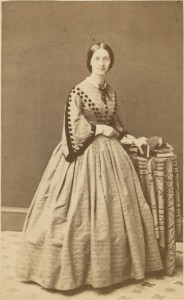 Julia Eliza Tredwell (pictured at right), Seabury and Eliza’s sixth child, was born on May 16, 1833. She was two years old when her father purchased the house on East Fourth Street that would be Julia’s home for the rest of her life. Many books in the Tredwell Book Collection bear her name, including several on French language and grammar, natural history, poetry, and mathematics.
Julia Eliza Tredwell (pictured at right), Seabury and Eliza’s sixth child, was born on May 16, 1833. She was two years old when her father purchased the house on East Fourth Street that would be Julia’s home for the rest of her life. Many books in the Tredwell Book Collection bear her name, including several on French language and grammar, natural history, poetry, and mathematics.
Julia’s Mysterious Illness
In a letter in the museum’s archive, written in August of an unnamed year, Julia expressed her concerns about her health to her mother. She was a guest at the National Hotel in Richfield Springs, a popular spa resort town in upstate New York, where she apparently went to take the “water-cure” to recover from an illness.
“I have felt very much better the past week. They all say I have gained. I feel it, but by weight I only have gained two pounds. I took a bath and I felt stronger as soon as I came out … It is so lonesome to be separated that I feel as if I ought not to stay as long as I have, but I hope in so doing that I will quite gain my strength.”
An Ancient Health Remedy: Water
Although we do not know the nature of the illness that befell Julia that summer, it would certainly not have been unusual for her to seek treatment at a spa hotel that offered the “water-cure,” a 19th century health reform movement that employed the therapeutic use of water to revitalize health and treat disease. Also known as hydrotherapy, it has been practiced since ancient times, when Greeks, Romans, and other early civilizations employed water for medicinal purposes. The perceived therapeutic value of springs rich in minerals such as bromine and sulfur was thought to be attained by a combination of bathing and drinking the water. After waning in the Middle Ages, the popularity of this form of alternative medicine spread throughout Europe and eventually became a craze in the United States, in part as a reaction to the brutal practices of blood-letting, purging, blistering, and other medical treatments of the time, which often worsened the patient’s condition.
The “water-cure” involved various rituals, some less aggressive than others, such as submersion in hot or cold tubs of mineral-rich water for hours at a time; wrapping in cold sheets and then sweating; as well as ingestion of 1-2 liters of foul-tasting mineral water in one sitting. Cold water enema was also considered to be of therapeutic value in treating bowel inflammations and constipation. The “water-cure” was prescribed for the relief of many other ailments, especially gout and arthritis; it offered a gentler alternative to the violent medical therapies typically employed. Dietary remedies, including abstention from coffee, tea, salt, and alcohol, as well as meat and dairy products, were also prescribed.
“For the Invalid and Pleasure Seeker”: Water-Cure and Vacation in One!
By the mid-19th century, the popularity of summer resort towns built around curative springs had soared, especially in New York State. The grand spa hotels typically featured hot and cold water therapy along with dietary and hygienic programs. Ever fearful of the summer cholera and other illnesses caused by the “miasma” that pervaded the air in New York City, those wealthy enough to escape eagerly adopted this fashionable practice, combining their quest for health with a desire for an elite vacation amidst splendid scenery. Among the most popular spa towns were Saratoga Springs, Ballston Spa, and Richfield Springs, which was celebrated for its sulfur water. Located about 65 miles west of Albany, Richfield Springs, where Julia stayed one August, began to draw visitors as early as the 1820s, after Dr. Horace Manley brought 25 patients to take the “water-cure” at his new sanitarium on the site of the Great White Sulphur Springs.
The Water-Cure for New Yorkers, Too
In 1843, Dr. Joel Shew (1816-1865) established a hydropathic treatment business in New York City, the first of its kind in America. He and his wife, Marie Louise Shew, ran the center out of their home on 4th Street, four blocks away from the Tredwell home. In 1845, Dr. Shew founded “The Water-Cure Journal and Herald of Reforms,” which promoted the principles and efficacy of the “water-cure.” Mrs. Shew, herself a staunch promoter of healthy living for women and children, wrote a popular treatise on the benefits of the water-cure, as well as proper diet and exercise, “Water-Cure for Ladies.”
By 1846, the Shews had relocated to 56 Bond Street, just a block from the Tredwells, where their Institution for the Practice of Water-Cure, was “situated in a very airy and pleasant part of up town, New York.” The Shews charged $1 to $2 per day for room and board, medical treatment, and advice, and focused their attention particularly on lung disorders, as “the air of New York is exceedingly bland and favorable for cases of the above-named kind.” The Tredwells may have known of the Shews’ water-cure business; they most likely would have been acquainted with and perhaps even subscribed to the Journal, as it was a very popular periodical of the time, acquiring 50,000 subscribers by 1850. As Dr. Shew stated in his Water-Cure and Health Almanac of 1847:
“…by the judicious use of cold water alone, the good effects of bleeding and blistering are most readily produced, without any of the bad effects, including the pain.”
Mineral Water in Central Park
Even New York City residents who did not have the means to escape the heat and humidity of their home town had access to therapeutic waters. In 1869 Central Park opened its own Mineral Water Pavilion north of the Sheep Meadow, which sold many varieties of spring water with desirable chemical properties thought to promote health and cure illness. Not to be outdone by the offerings of the lavish summer resorts outside of New York City, the Pavilion offered morning summer recitals as an entertainment for the water-ingesting masses. Due to the unprecedented demand for mineral water in the city, merchants in the spa towns took to bottling the mineral water and shipping it to the municipal markets. In the letter to her mother, Julia refers to a neighbor being able to obtain the mineral water from “Cozzens,” who is mentioned in an advertisement in The New York Times, May 16, 1861:
“Sulphur water from these celebrated Springs has been kept for sale, at F.S. Cozzens, number 23 Warren Street.”
Did Julia Recover?
By the turn of the century, with the discovery of germ theory and advances in drug therapy, and as the leisure class sought other forms of entertainment, the popularity of the resort spa towns and the “water-cure” declined. While we don’t know if the “water-cure” proved therapeutic for Julia, or if that was her only foray into a spa town for her health, it most likely did her no harm. She died in 1909 at her home on East 4th Street, at the age of 76.
Sources:
- Bailey, W.T. Richfield Springs and Vicinity. New York: A.S. Barnes & Co., 1874.
- Legan, Marshall Scott. Hydrotherapy, or the Water-Cure in Wrobel, Arthur, ed. Pseudoscience & Society in 19th-Century America. Lexington: The University Press of Kentucky, 1987.
- Miller, Tom. “The Lost Mineral Water Pavilion of Central Park.” Web blog post. Daytonian in Manhattan daytoninmanhattan.blogspot.com. 14 August 2010. Web 20 April 2016.
- Shew, Joel, ed. Water-Cure and Health Almanac for 1847. New York: William H. Graham, 1846.
“The Destroying Angel:” New York’s 1832 Cholera Epidemic
by Ann Haddad
Disturbing News
In the harsh winter of 1831-32, Seabury Tredwell had cause for alarm. As he conducted his business at the seaport and in his warehouse on Pearl Street, he could not have avoided the terrifying news. It was spoken of at every turn, and reported daily in the newspapers: “King Cholera” was heading west! By mid-June, after cutting a path of death as it traveled west from India through Europe, cholera had crossed the Atlantic and reached Canada. If Seabury had kept a journal, most likely he would have written words similar to those of the former New York mayor and diarist Philip Hone, whose entry on June 15 reads:
“It [cholera] must come, and we are in a dreadful state to receive it.
The city is in a more filthy state than Quebec and Montreal.”
Uncle Sam(uel): Bishop, Loyalist … Broadway Star?
by Ann Haddad
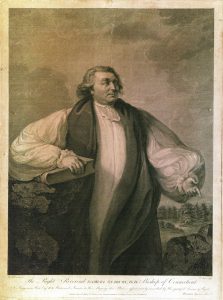 Samuel Seabury |
Early in Act I of Hamilton, as I sat entranced by Lin-Manuel Miranda’s Broadway mega-hit, a rapper in clerical garb mounted a box, and, in a song entitled “Farmer Refuted,” cried out, “Here ye, hear ye! My name is Samuel Seabury and I present…”
I was immediately taken aback. “Samuel Seabury? Seabury Tredwell’s namesake and uncle? Is this the same guy whose portrait adorns one wall in the Tredwell family room? What is he doing here, in a hip-hop musical about Alexander Hamilton?”
Reverend Samuel Seabury (1729-1796), was the half-brother of Seabury Tredwell’s mother, Elizabeth Seabury. Born in Groton, Connecticut, Seabury completed his education at Yale in 1748, and in 1752 earned a degree in medicine at the University of Edinburgh.
One year later, like his father before him, he was ordained into the Episcopal Church in London, and returned to America, where he served as Anglican rector in various parishes in New Jersey, in Queens County, and, during the American Revolution, in St. Peter’s Church in Westchester, New York.
“Seabury Tredwell to Eliza Parker:” A New York City Wedding, June 13, 1820
by Ann Haddad
The entry in the wedding registry of St. George’s Episcopal Church on Chapel (now Beekman) Street, dated June 13, 1820, reads simply “Seabury Tredwell to Eliza Parker.” The tying of the knot between 40-year-old Seabury and 23-year-old Eliza, officiated by the rector, Reverend Dr. James Milnor (1773-1845), was the start of a 45-year union.
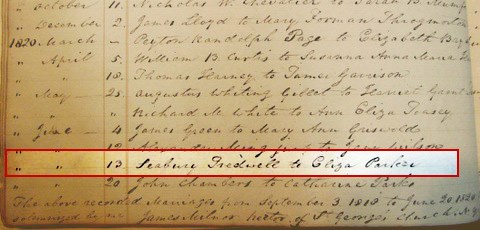
Wedding Registry, St. George’s Episcopal Church
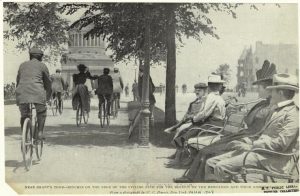
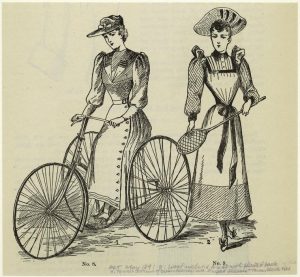
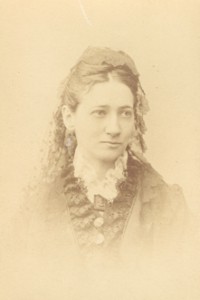
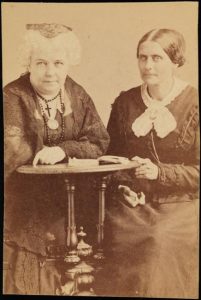
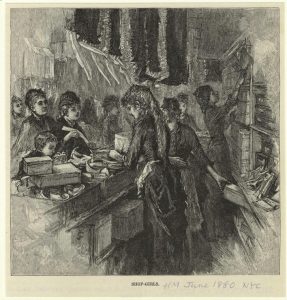
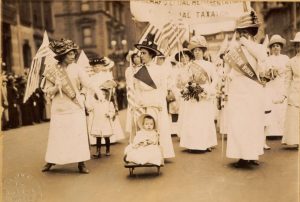
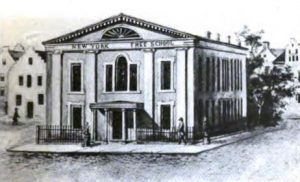
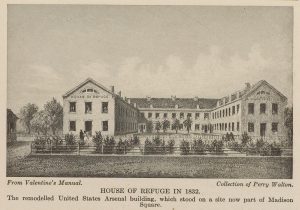
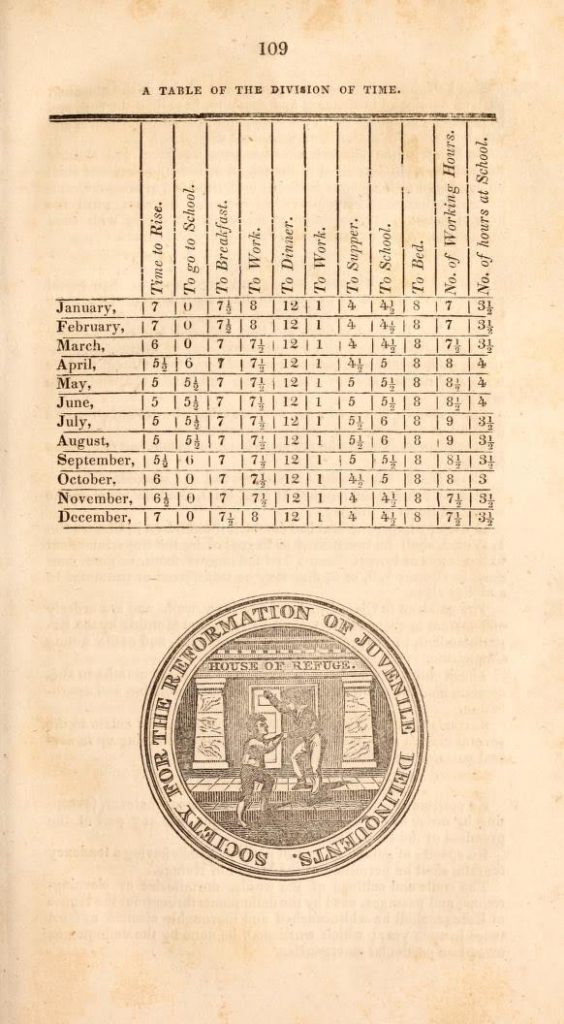
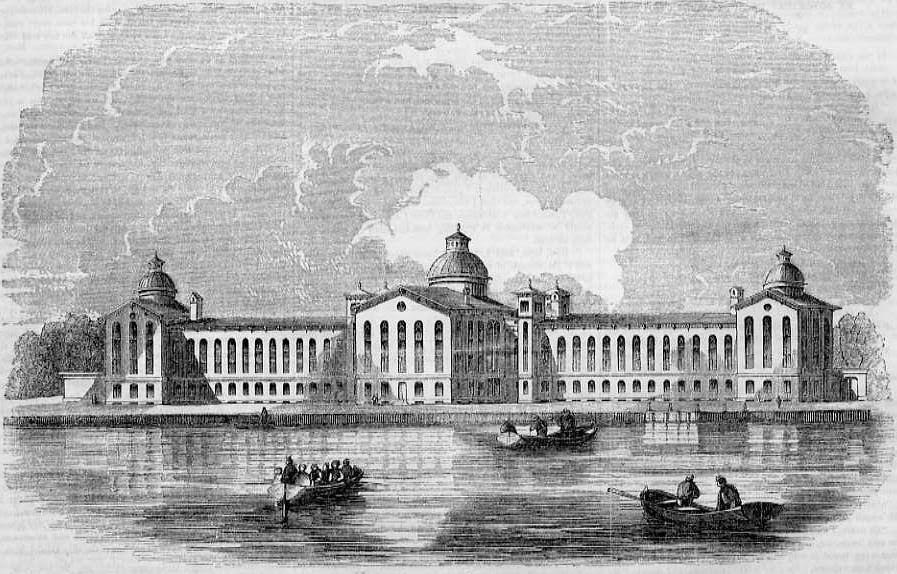
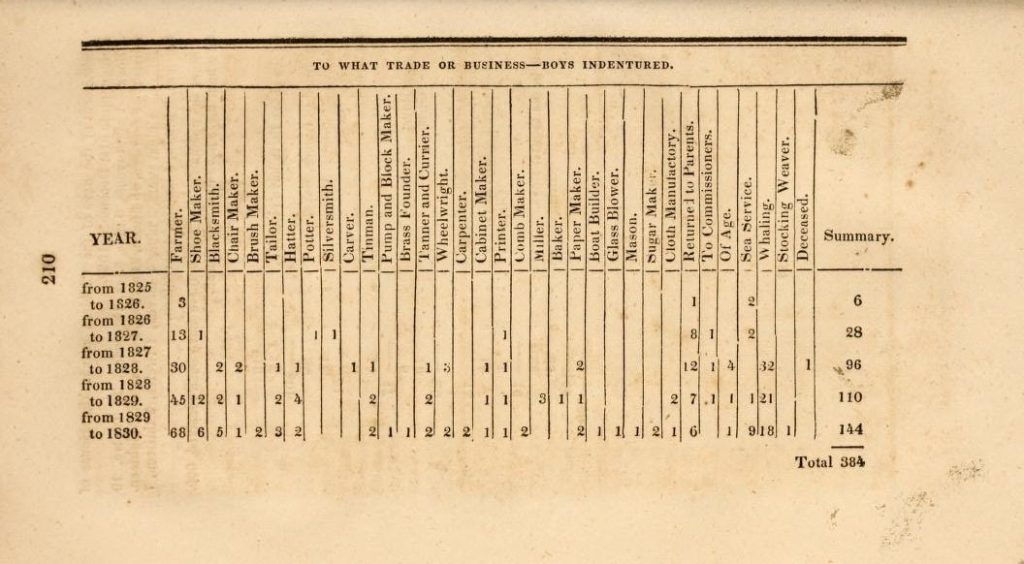
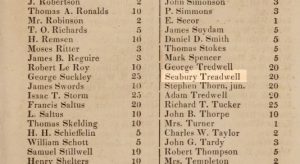

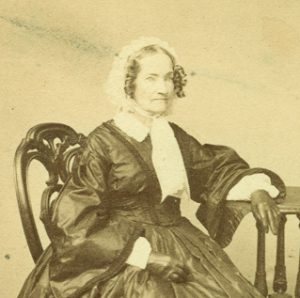
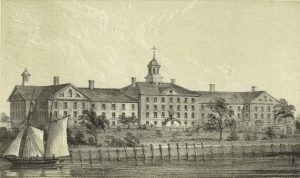
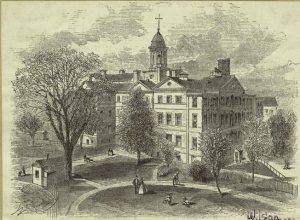
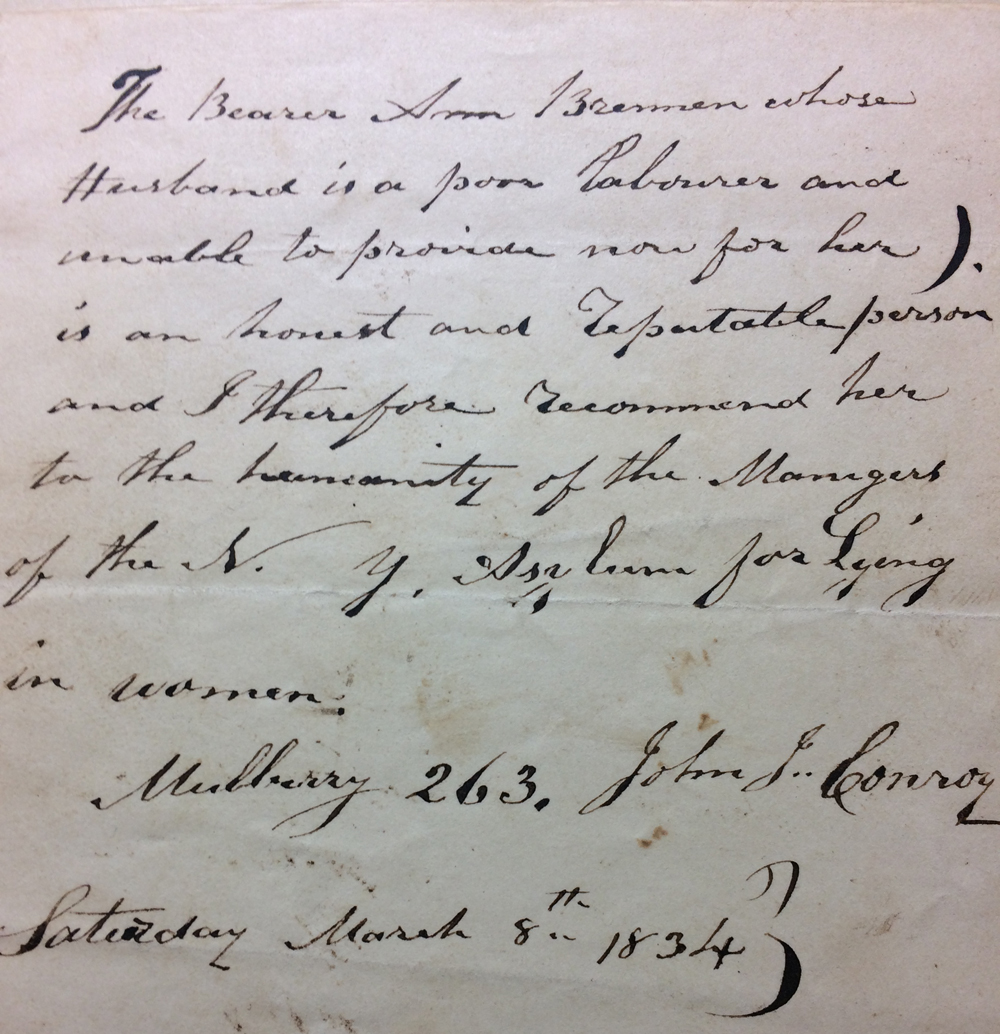
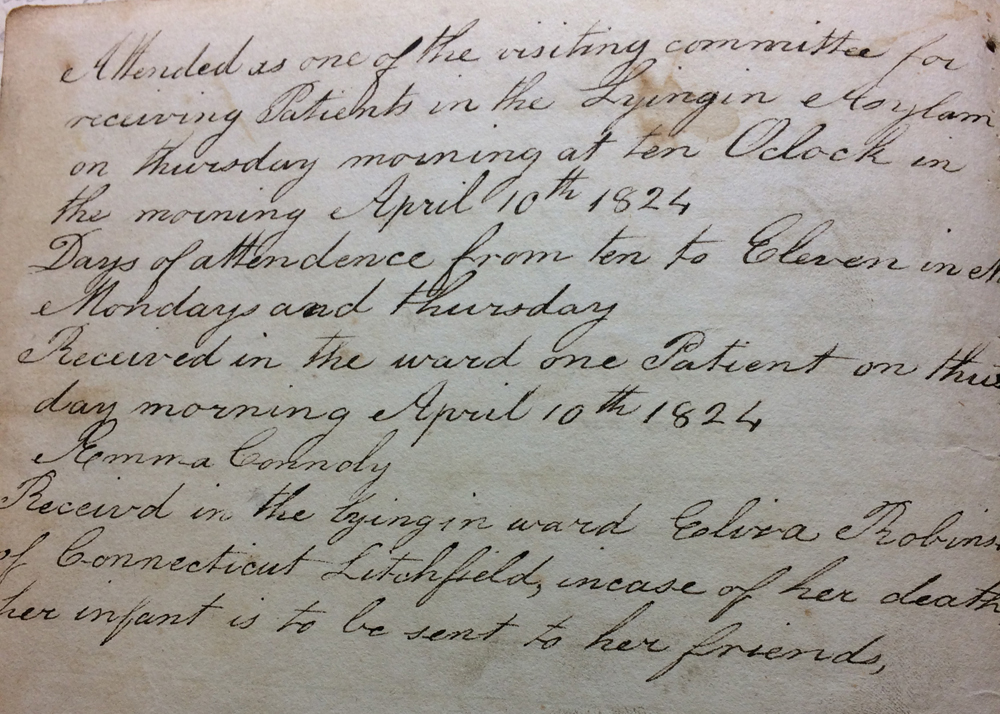
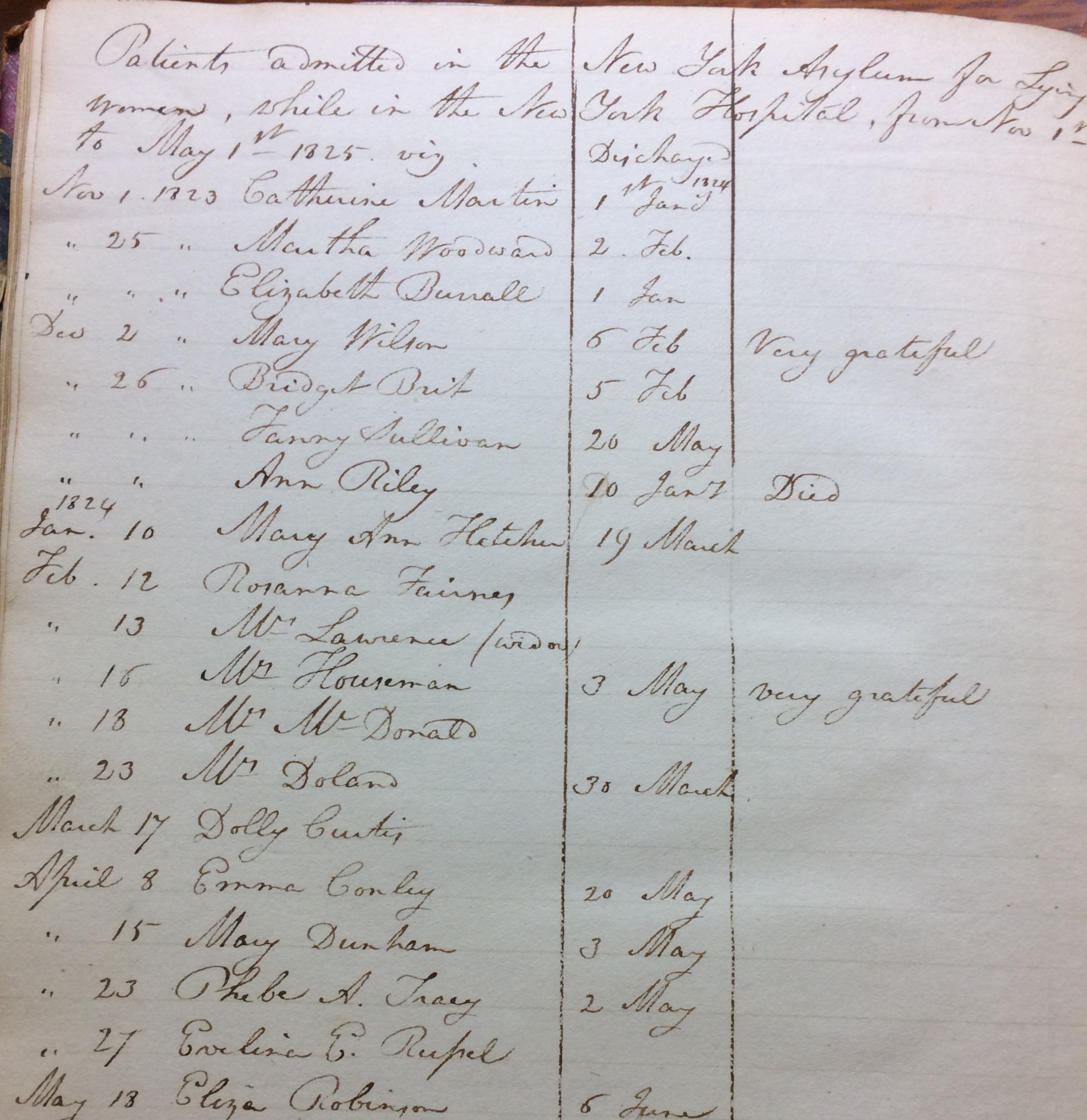
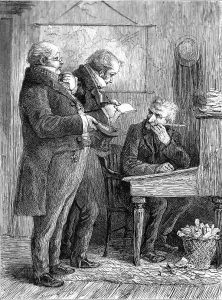


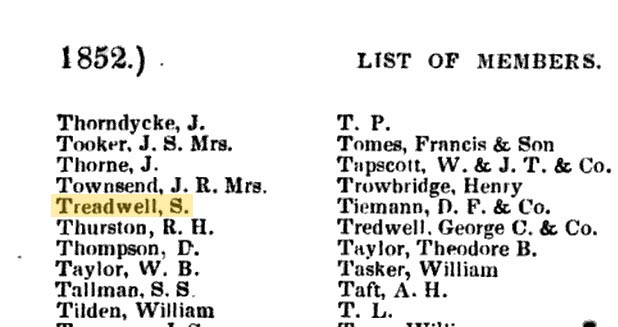
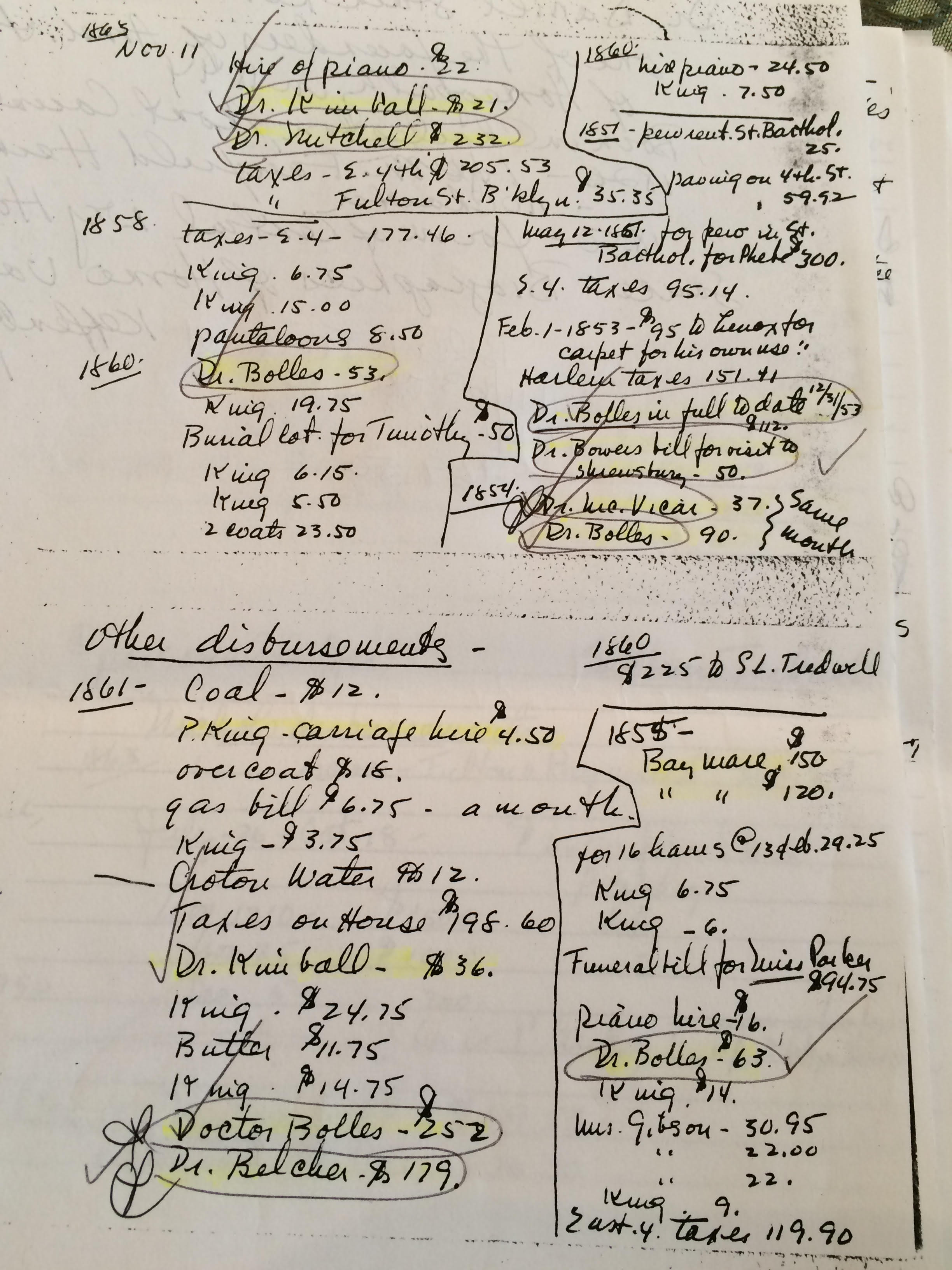
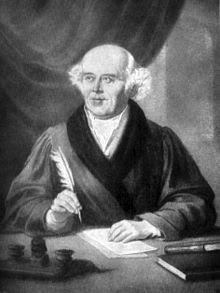
![Henry Monnier. “Allopath and Homeopath argue over method of treatment. [183-]”. (National Library of Medicine.)](https://merchantshouse.org/wp-content/uploads/2016/10/allopath-argue.jpg)
